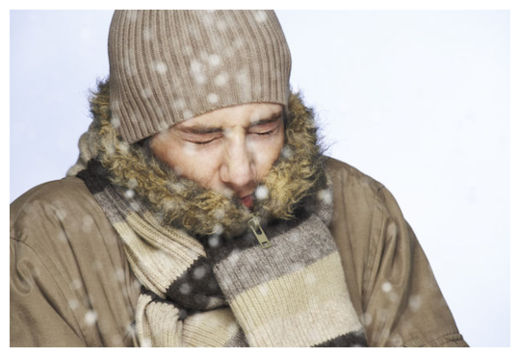
© Photos.com
Are you tired of being
cold all the time? Do you wish you could turn the cold off at the push of a button? Well neuroscientists from the University of South Carolina (
USC) may have some good news for you.
It seems this group of researchers, led by David McKemy, associate professor of neurobiology in the USC Dornsife College of Letters, Arts and Science, have been able to isolate chilliness at the cellular level, identifying a network of sensory neurons in the skin that relays the sensation of cold to the brain. McKemy and his colleagues were able to selectively turn off this sensation in mice without affecting their ability to sense both heat and touch.
This study follows previous work by McKemy, in which he discovered a link between the sensation of cold and a protein known as
TRPM8 (pronounced trip-em-ate). The TRPM8 protein is a sensor of cold in skin neurons, as well as a receptor for menthol, the cooling component of mint.
Publishing the new work in the February 13 issue of the
Journal of Neuroscience, McKemy and his team have isolated and cut off the neurons that express TRPM8, giving them the ability to test the function of these cells specifically.
The researchers used a mouse-tracking software program developed by one of McKemy's students to test mice on a multi-temperature surface to see how they react. The team used two groups of mice: a control group and a group without TRPM8 neurons. They tested the mice on a variety of surfaces ranging in temperature from 32 to 122 degrees Fahrenheit. The mice were allowed to move freely among the regions of the surface.
They found that the TRPM8-free mice did not feel the cold regions, but still responded to the warmer areas. They found that the control group tended to stick to an area around the 86F mark, avoiding both cooler and warmer surfaces. But the TRPM8-free mice only avoided the hot surfaces and not the colder areas - even though the cold should have been painfully obvious after moments of contact.
The team then tested to see whether the removal of the TRPM8 protein would affect the sensation of touch. They tested grip strength by having the mice try balancing on a rod while it rotated; they found no difference between the control group and the TRPM8-free group during this test, implying that sense of touch is not affected when removing the chilly protein.
Such a discovery could one day have important implications in the way we feel sensation, allowing for better pain management treatments without robbing a patient's ability to touch.
"The problem with pain drugs now is that they typically just reduce inflammation, which is just one potential cause of pain, or they knock out all sensation, which often is not desirable," McKemy said in a statement. "One of our goals is to pave the way for medications that address the pain directly, in a way that does not leave patients completely numb."

scientists are really something. Feeling cold is there to alert you that especially the upper internal body parts need heat in order to continue to function normally. If we stopped feeling cold eventually we'd FREEZE to death ! High on Phd's low on common sense.